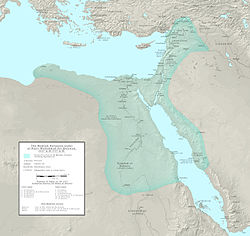
Back الدولة المملوكية Arabic الدوله المملوكيه ARZ Sultanatu mamelucu d'Exiptu AST Məmlük dövləti Azerbaijani مملوک سولطانلیغی (میصر) AZB Мамлюкскі султанат Byelorussian Мамелюкски султанат Bulgarian মামলুক সালতানাত Bengali/Bangla Soldanat Mameluc Catalan مەمالیکەکان CKB
Mamluk Sultanate | |||||||||||||||||||||||
|---|---|---|---|---|---|---|---|---|---|---|---|---|---|---|---|---|---|---|---|---|---|---|---|
| 1250–1517 | |||||||||||||||||||||||
| Attributed arms of the Mamluk Sultan (by Mecia de Viladestes map, 1413) | |||||||||||||||||||||||
 Extent of the Mamluk Sultanate under Sultan Al-Nasir Muhammad | |||||||||||||||||||||||
| Status | Sultanate under the Abbasid Caliphate[2] | ||||||||||||||||||||||
| Capital | Cairo | ||||||||||||||||||||||
| Common languages | |||||||||||||||||||||||
| Religion |
| ||||||||||||||||||||||
| Demonym(s) | Mamluk | ||||||||||||||||||||||
| Caliph | |||||||||||||||||||||||
• 1261 | Al-Mustansir (first) | ||||||||||||||||||||||
• 1262–1302 | Al-Hakim I | ||||||||||||||||||||||
• 1406–1414 | Abū al-Faḍl Al-Musta'in | ||||||||||||||||||||||
• 1508–1516 | Al-Mutawakkil III (last) | ||||||||||||||||||||||
| Sultan | |||||||||||||||||||||||
• 1250 | Shajar al-Durr (first) | ||||||||||||||||||||||
• 1250–1257 | Izz al-Din Aybak | ||||||||||||||||||||||
• 1260–1277 | Baibars | ||||||||||||||||||||||
• 1516–1517 | Tuman bay II (last) | ||||||||||||||||||||||
| History | |||||||||||||||||||||||
• Murder of Turanshah | 2 May 1250 | ||||||||||||||||||||||
| 22 January 1517 | |||||||||||||||||||||||
| |||||||||||||||||||||||
| History of Egypt |
|---|
 |
|
|
The Mamluk Sultanate (Arabic: سلطنة المماليك, romanized: Salṭanat al-Mamālīk), also known as Mamluk Egypt or the Mamluk Empire, was a state that ruled Egypt, the Levant and the Hejaz from the mid-13th to early 16th centuries. It was ruled by a military caste of mamluks (freed slave soldiers) headed by a sultan. The sultanate was established with the overthrow of the Ayyubid dynasty in Egypt in 1250 and was conquered by the Ottoman Empire in 1517. Mamluk history is generally divided into the Turkic or Bahri period (1250–1382) and the Circassian or Burji period (1382–1517), called after the predominant ethnicity or corps of the ruling Mamluks during these respective eras.[6][7][8][9][10]
The first rulers of the sultanate hailed from the mamluk regiments of the Ayyubid sultan al-Salih Ayyub (r. 1240–1249), usurping power from his successor in 1250. The Mamluks under Sultan Qutuz and Baybars routed the Mongols in 1260, halting their southward expansion. They then conquered or gained suzerainty over the Ayyubids' Syrian principalities. By the end of the 13th century, through the efforts of sultans Baybars, Qalawun (r. 1279–1290) and al-Ashraf Khalil (r. 1290–1293), they conquered the Crusader states, expanded into Makuria (Nubia), Cyrenaica, the Hejaz, and southern Anatolia. The sultanate then experienced a long period of stability and prosperity during the third reign of al-Nasir Muhammad (r. 1293–1294, 1299–1309, 1310–1341), before giving way to the internal strife characterizing the succession of his sons, when real power was held by senior emirs.
One such emir, Barquq, overthrew the sultan in 1390, inaugurating Burji rule. Mamluk authority across the empire eroded under his successors due to foreign invasions, tribal rebellions, and natural disasters, and the state entered into a long period of financial distress. Under Sultan Barsbay major efforts were taken to replenish the treasury, particularly monopolization of trade with Europe and tax expeditions into the countryside.
- ^ Photographic extract: Mamluk Sultanate in the Catalan Atlas (1375)
- ^ Cite error: The named reference
Stilt30-1was invoked but never defined (see the help page). - ^ Rabbat 2001, p. 69.
- ^ Fischel 1967, p. 72.
- ^ Turan, Fikret; Boeschoten, Hendrik; Stein, Heidi (2007). "The Mamluks and Their Acceptance of Oghuz Turkish as Literary Language: Political Maneuver or Cultural Aspiration?". Turcologica. Harrassowitz.
- ^ "Mamluk | Islamic dynasty". Encyclopædia Britannica. Retrieved 13 November 2015.
- ^ "Egypt - The Mamluks, 1250-1517". countrystudies.us. Retrieved 13 November 2015.
- ^ Setton, Kenneth M. (1969). The Later Crusades, 1189-1311. Wisconsin, USA: Univ of Wisconsin Press. p. 757. ISBN 978-0-299-04844-0.
- ^ Levanoni 1995, p. 17.
- ^ Hillenbrand, Carole (2007). Turkish Myth and Muslim Symbol: The Battle of Manzikert. Edinburg: Edinburgh University Press. pp. 164–165. ISBN 978-0-7486-2572-7.


